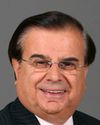I'm sort of sensing there are several questions here, so let me try to answer them one at a time.
On what you're talking about in the Quebec budget, it is simply a proposal. We don't have the final details on it. My understanding is that people at Health Canada are studying the proposal. Clearly, as you know, the Canada Health Act requires provinces to meet certain conditions of the Canada health transfer. I'm not an expert in that area, so that's about as far as I'm going to take that point. But Health Canada is looking at the proposal and will be assessing it with respect to the Canada Health Act.
As time moves along, the equalization program is always evolving and trying to capture how provincial taxation practices change. When you get into something called a user fee, the current program excludes user fees because it does not lead to fiscal disparities. But I'm not even going to try to pre-judge what the ultimate treatment would be, because I think it is a bigger issue. Until we have more precise details it's very difficult to give an answer.




